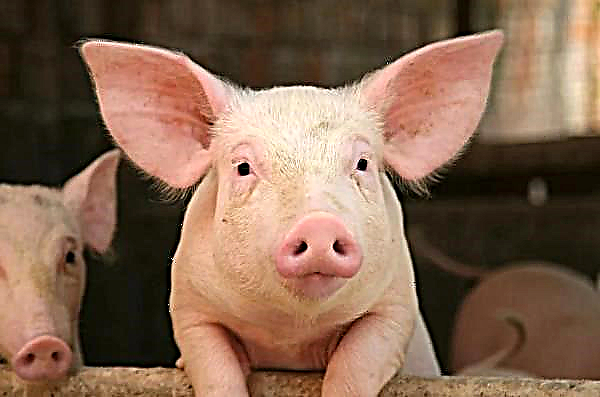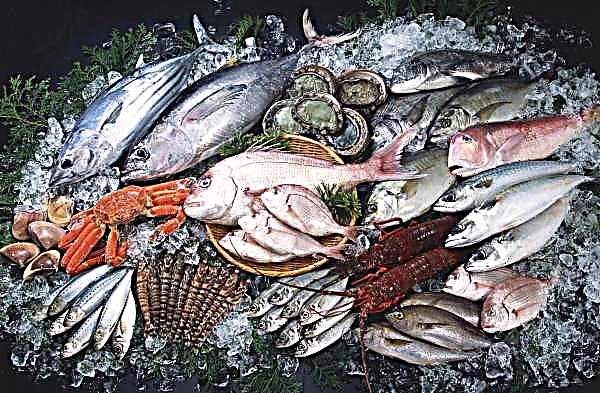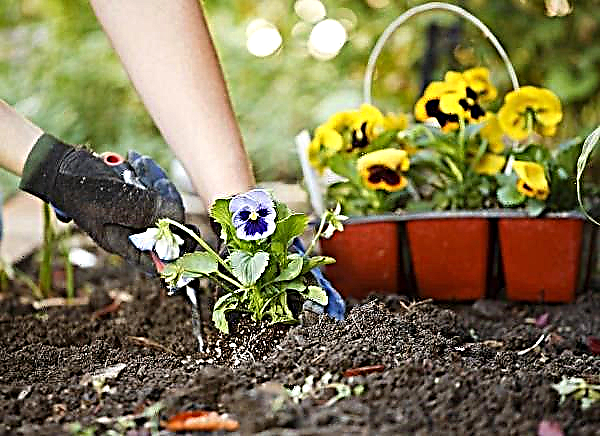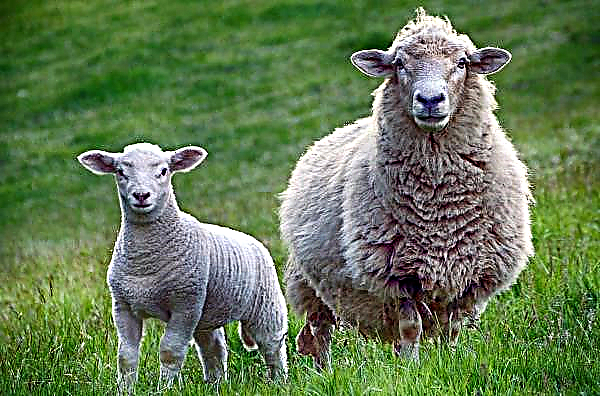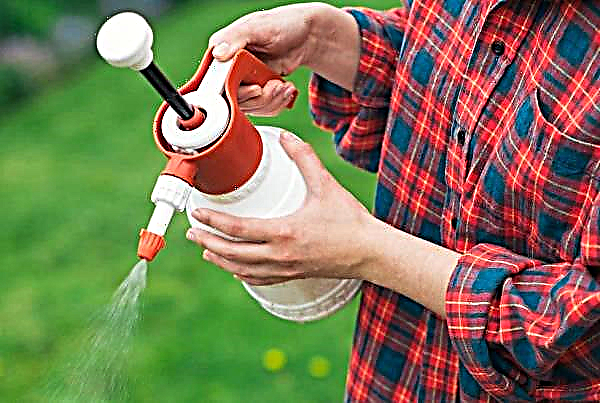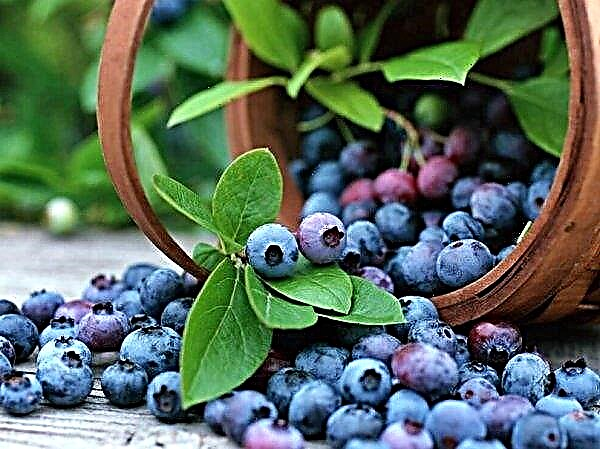Due to the huge popularity of hydrangea among gardeners, selection work on the cultivation of new flower varieties continues to this day. One of the most beautiful novelties among plant representatives is the Pearl of the Festival (the second name is Pearl de Festival). Bushes are widely used in landscape design, they are undemanding in care and can grow even in regions with a cold climate. A botanical description of hydrangea is the Pearl of the Festival, especially its planting, as well as the rules for caring for bushes - later in the article.
Description of appearance
Hydrangea Pearl of the Festival (Hydrangea Perle de Festival) is a new variety of panicled species of culture. It was received in France in the Pepinieres Renault nursery, and in the summer of 2018, the bush was first introduced in Moscow. The plant has a decorative appearance, so it can become an adornment of any garden.

Bush
Adult hydrangea The Pearl of the Festival is quite large, so it requires a certain amount of free space on the site.
Did you know? The color saturation of hydrangea petals depends on the level of soil acidity. The more acidic the soil, the brighter the color of the inflorescences and vice versa.
Description of the appearance of the bush:
- plant height can reach 1.5 m;
- representatives of this variety are characterized by a moderate growth rate;
- krone - round, looks compact;
- the bush is about 1.2 m wide.

Leaves
Thanks to the bright green crown, representatives of this variety are distinguished by their attractive appearance even in spring, even before buds and inflorescences appear on the bush. The leaves of the bush are characterized by large sizes, and their upper surface is velvety to the touch. The sheet plate itself is oval and painted in a light green color.
Inflorescences
A feature of the Pearl of the Festival variety is the relatively early flowering, during which the bush looks especially elegant.
The main characteristics of inflorescences:
- formed on a plant from the second half of June to the beginning of October;
- reach a length of 15–20 cm;
- panicles with an expanded base and a round top;
- consist of flowers with 4 widely spaced petals (in shape they resemble a butterfly);
- exude a light floral aroma;
- at the beginning of flowering, the petals are painted white, and a little later a greenish-pink border appears on them;
- by the end of the flowering period, the petals of the flowers acquire a bright pink color, and then become light coffee.

Variety Characteristics
In addition to the decorative appearance, the hydrangea Pearl of the Festival attracts many gardeners with its positive characteristics. They allow you to grow the plant even in regions with harsh winters, without fear that the bush will die from adverse climate conditions.
Important! Hydrangea The Pearl of the Festival begins to bloom 2-3 years after planting.
The main characteristics of the variety:
- long and plentiful flowering, lasting until the onset of the first frost;
- high winter hardiness - adult bushes can withstand frosts to -35 ° C;
- exactingness to soil moisture - hydrangea does not tolerate drought, but also reacts negatively to stagnation of moisture in the soil;
- good ability to reproduce - a new plant can be grown from seed, cuttings, cuttings, or a large mother bush can be divided into parts;
- good immunity - with proper care, the bush is rarely affected by infections and insects.

Growth Requirements
Hydrangea The Pearl of the Festival stubbornly tolerates adverse climate conditions, but annually pleases with lush bloom only when grown on a suitable site. For planting, seedlings with a closed root system, bought in a specialized store, are used. The age of planting material should be 2-3 years. In order to grow strong and beautiful bushes, you need to know the timing of planting young plants on the site, as well as follow the simple rules for hydrangea care.
Important! In regions with a warm climate, hydrangea is planted on the street in the second half of April or early September. In the northern regions, landing is permitted only at the beginning of May.
Place of growth
When choosing a site for planting the Pearls of the Festival, it is necessary to take into account the main factors that directly affect the normal development of the bush and the formation of inflorescences.
The place for hydrangea is chosen according to the following criteria:
- good sunshine in the morning - light is necessary for the growth of shoots and the formation of inflorescences, but direct sunlight at noon can leave sunburn on the leaves;
- acidic and fertile soil with a loose structure - well passes moisture and air to the roots, and also provides plants with necessary nutrients;
- protection from gusts of wind - they can break the fragile shoots of hydrangea.

Not less than 2 weeks before planting, the selected area is dug up to the depth of the bayonet shovel, clearing the land of plant debris. Then prepare pits with a depth of 0.5 m and a diameter of about 0.7 m, filling them with loose and nutritious soil. A distance of 1.2 m should be maintained between adjacent recesses.
The soil mixture for filling the planting pit consists of the following components:
- 1 part of turf land;
- 1 part of sheet land;
- 1 part humus;
- 1 part peat.
Step-by-step instructions for planting hydrangea.
- Form a small hill of prepared nutrient soil at the bottom of the landing pit.
- Dip the bottom of the plant into the hole with an earthen lump. The root neck should be at the same level with the surface of the earth.
- Fill the pit to the very top with the remnants of loose soil. Lightly tamp with her hands around the bush.
- Pour abundantly with warm, settled water.
- When the moisture is completely absorbed, mulch the trunk circle with peat and wood sawdust.
 In the first few days after planting, a hydrangea seedling should be shaded from the sun so that it does not burn. To do this, a small frame is built around the plant, on which a tulle is thrown.
In the first few days after planting, a hydrangea seedling should be shaded from the sun so that it does not burn. To do this, a small frame is built around the plant, on which a tulle is thrown.
Care
After hydrangea has successfully taken root in the soil, you need to provide it with proper care, which consists in regular watering, periodic fertilizing and pruning. All these procedures are the key to the lush flowering of the bush, and also increase its immunity to diseases and pests.
Did you know? Hydrangea grew on the planet more than 40 thousand years ago. This is evidenced by archaeological excavations that were conducted in the north of the United States.
Basic recommendations for flower care:
- watering is carried out with settled or rain water with a frequency of 1 time per week;
- to prevent rapid evaporation of the liquid, the bush is irrigated in the morning or evening;
- the rate of water consumption during irrigation is 20 liters per adult plant and about 12 liters per young seedling;
- every 2 weeks hydrangea is watered with complex mineral fertilizers - you can use special top dressing for heather and rhododendrons, following the instructions on the package;
- in early spring, the shoots of a 3-4-year-old plant are necessarily shortened by 2⁄3 of the length - this stimulates lush flowering;
- sanitary pruning is carried out 2 times per season - dry and damaged shoots are removed in the early spring and in September;
- Before the onset of winter, the area of the trunk circle is covered with a thick layer of peat mulch, and the shoots of the bush are pulled together in a bundle to protect them from breaking under the weight of the snow cover.

Landscape design application
Beautiful hydrangea bushes Pearl of the Festival act as a bright decoration for any area. The main ways to use the plant in landscape design:
- to create flower borders and hedges;
- as an independent decorative element;
- for landscaping small garden plots and flower beds;
- in combination with deciduous perennials (ferns, hosts);
- for group plantings with other flowering shrubs (barberry, spirea).

At the end of the growing season, lush hydrangea inflorescences are cut from the bush and used to create beautiful bouquets, original floral compositions.
Due to its many positive qualities and attractive appearance, the hydrangea Pearl of the Festival is gaining great popularity among gardeners. Using the information presented in the article, you can grow a bush even in the northern regions by correctly planting a seedling and providing it with proper care.


